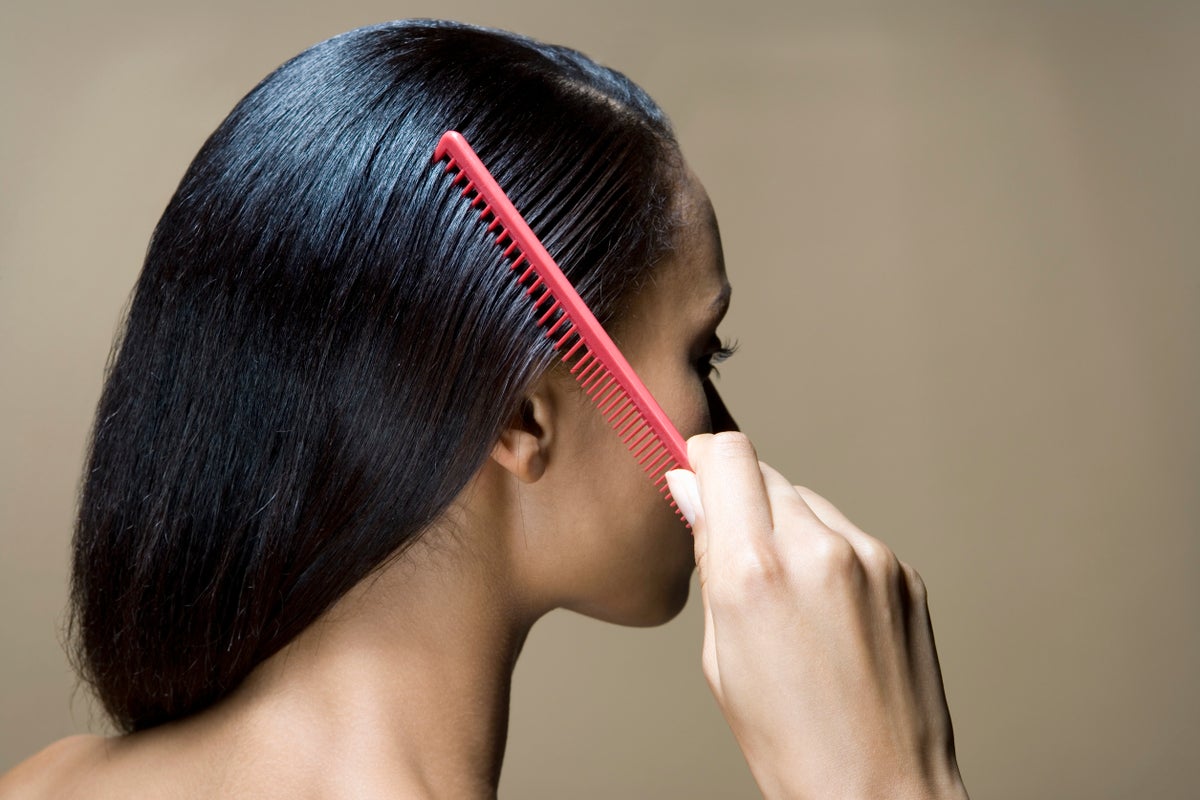The Hidden Health Dangers Of Synthetic Hair Braids For Black Women

Table of Contents
Traction Alopecia and Hair Loss from Tight Braiding
Understanding Traction Alopecia
Traction alopecia is a form of hair loss caused by prolonged pulling or tension on the hair. It's particularly prevalent among Black women who frequently wear tight braids, weaves, or extensions. The constant pulling on the hair follicles weakens them over time, leading to inflammation and ultimately, hair loss. Synthetic hair braids, due to their weight and the often-tight braiding styles associated with them, significantly increase the risk of traction alopecia.
- Mechanics of Damage: Tight braiding puts excessive pressure on hair follicles, disrupting their natural growth cycle. This constant stress can lead to follicle miniaturization, resulting in thinner, weaker hair strands.
- Symptoms of Traction Alopecia: Symptoms include thinning hair, especially around the hairline and temples, a receding hairline, itching, inflammation, and pain at the scalp. In severe cases, permanent hair loss can occur.
- Long-Term Consequences: If left untreated, traction alopecia can lead to permanent hair loss in affected areas. Early intervention and changes in styling habits are crucial to prevent this.
Scalp Infections and Irritation from Synthetic Materials
Synthetic Hair and Bacteria
Synthetic hair braids, while aesthetically pleasing, can create a breeding ground for bacteria and fungi. The tightly woven braids trap sweat, dirt, and oil against the scalp, creating a warm, moist environment ideal for microbial growth. This can lead to various scalp infections and irritation.
- Types of Scalp Infections: Common scalp infections associated with synthetic hair braids include folliculitis (inflammation of hair follicles) and tinea capitis (ringworm).
- Importance of Scalp Hygiene: Maintaining proper scalp hygiene is crucial to prevent infections. Regularly washing your scalp with a gentle, sulfate-free shampoo and ensuring your scalp is thoroughly dried after washing is essential. Avoid using harsh chemicals or excessive heat on your scalp.
- Risks of Unsterilized Hair: Using unsterilized synthetic hair significantly increases the risk of infection. Always ensure that any synthetic hair extensions or braids you purchase are clean and properly packaged.
Chemical Exposure and Allergic Reactions from Synthetic Hair Treatments
Chemicals in Synthetic Hair
Many synthetic hair products contain chemicals such as formaldehyde, dyes, and other potentially harmful substances. These chemicals can be absorbed through the scalp, leading to allergic reactions, skin irritation, and other health problems.
- Potential Chemicals: Formaldehyde, a known carcinogen, is sometimes used in the manufacturing of synthetic hair to preserve it. Dyes used to color synthetic hair can also cause allergic reactions in sensitive individuals.
- Allergic Reactions and Sensitivities: Symptoms of allergic reactions can range from mild itching and redness to severe skin inflammation and respiratory problems. Individuals with sensitive skin should exercise extra caution when choosing synthetic hair products.
- Selecting High-Quality Hair: Opting for high-quality synthetic hair from reputable brands that prioritize safety and minimize chemical use is crucial to reducing the risk of chemical exposure. Look for products that are clearly labeled and avoid those with vague or unclear ingredients lists.
Headaches and Scalp Pain from Tight Braids and Heavy Extensions
The Physical Strain of Heavy Braids
Wearing heavy braids or extensions for extended periods puts significant strain on the scalp and surrounding muscles. This tension can lead to headaches, scalp pain, and even neck pain. The weight of the synthetic hair, combined with tight braiding techniques, exacerbates the problem.
- Weight, Tension, and Pain: The heavier the braids and the tighter they are, the greater the tension on the scalp. This constant pressure can cause persistent headaches and scalp tenderness.
- Importance of Proper Braid Weight and Tension: Choosing lighter synthetic hair and opting for less-tight braiding styles can significantly reduce the risk of headaches and scalp pain. Regular breaks from wearing braids are also beneficial.
- Managing Discomfort and Preventing Headaches: If you experience headaches or scalp pain, consider loosening your braids, taking pain relievers as needed (after consulting with a doctor), and applying gentle scalp massages to relieve tension.
Conclusion
While synthetic hair braids offer a stylish and versatile option for many Black women, understanding the potential health risks is crucial. Choosing high-quality synthetic hair with minimal chemical treatments, maintaining impeccable scalp hygiene, avoiding excessively tight braids, and being mindful of the weight of your extensions can significantly reduce the risks of traction alopecia, scalp infections, allergic reactions, and headaches. Remember, prioritizing your scalp and hair health is essential. Make informed decisions regarding your synthetic hair braids to maintain beautiful and healthy hair. Choose wisely, and enjoy the beauty of your chosen style without compromising your well-being.

Featured Posts
-
 Could Emegha Join Chelsea Analyzing The Transfer Rumours
May 27, 2025
Could Emegha Join Chelsea Analyzing The Transfer Rumours
May 27, 2025 -
 Ukraina I Nato Nemetskaya Podderzhka I Put K Chlenstvu
May 27, 2025
Ukraina I Nato Nemetskaya Podderzhka I Put K Chlenstvu
May 27, 2025 -
 Problemes De Securite A Saint Ouen Relocalisation De Classes De Maternelle
May 27, 2025
Problemes De Securite A Saint Ouen Relocalisation De Classes De Maternelle
May 27, 2025 -
 Which Streaming Service Has The Best Movie Selection A Detailed Comparison
May 27, 2025
Which Streaming Service Has The Best Movie Selection A Detailed Comparison
May 27, 2025 -
 Knives Outs Future Is It Entirely Dependent On Daniel Craig
May 27, 2025
Knives Outs Future Is It Entirely Dependent On Daniel Craig
May 27, 2025
Latest Posts
-
 Confirmation Officielle Le Tunnel De Tende Rouvrira En Juin
May 30, 2025
Confirmation Officielle Le Tunnel De Tende Rouvrira En Juin
May 30, 2025 -
 Gisele Pelicots Memoir Hbo Adaptation In The Works
May 30, 2025
Gisele Pelicots Memoir Hbo Adaptation In The Works
May 30, 2025 -
 Tunnel De Tende Ouverture Prevue En Juin Selon Le Ministre Tabarot
May 30, 2025
Tunnel De Tende Ouverture Prevue En Juin Selon Le Ministre Tabarot
May 30, 2025 -
 Ouverture Du Tunnel De Tende En Juin Confirmation Du Ministre Tabarot
May 30, 2025
Ouverture Du Tunnel De Tende En Juin Confirmation Du Ministre Tabarot
May 30, 2025 -
 5 Ans D Ineligibilite Le Jugement De Marine Le Pen Suscite La Controverse
May 30, 2025
5 Ans D Ineligibilite Le Jugement De Marine Le Pen Suscite La Controverse
May 30, 2025
